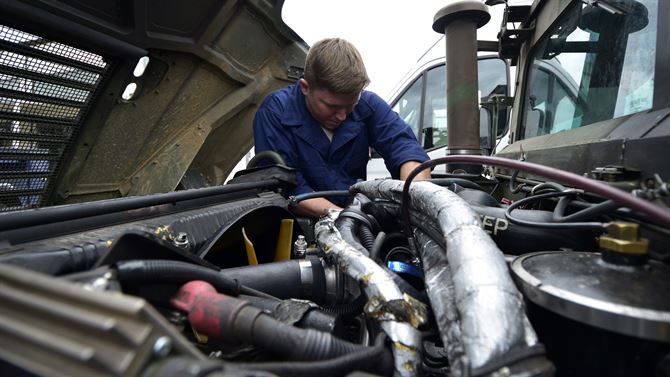A vacuum leak in a car is a simple fix but the hardest part is locating where the leak is occurring. All it takes is the smallest of splits within the vacuum hose to causes issues with your cars functionality.
The performance of your car can suffer from a vacuum leak with the fuel economy, lack of power and potentially damage to your engine. The vacuum leak will offset the correct air to fuel ratio, which need to be correct for optimal performance.
How could a small vacuum leak damage your engine? This is over reacting, the vacuum leak reduces to engine combustion effectiveness and obstructs the delivery of fuel that causes additional stress on components. The leak will only get worse and should be fixed as soon as possible.
Table of Contents
Car Vacuum Leak Symptoms
The easiest vacuum leak to notice is the distinctive hissing or whistle but there are other symptoms to be aware of. The worst thing about vacuum leaks is that it can be misdiagnosed as a fuel or ignition problem. However, if you have the following symptoms, you most probably have a vacuum leak:
- Idling Too Fast. Older cars without idle control will suffer from a fast idle, which suggests the leaks is past the throttle and near the carburetor or throttle body gaskets.
- Acceleration Misfire. A common vacuum leak symptom but also can be caused through various other problems.
- No Changes From Adjustments. Whilst diagnosing an issue with your car, you may alter with the idle mixture. The idle speeds should change as a result but if they don’t, you may have a leak in the system.
- Rough Idling or Stalling. You will be able to feel this through the car in the form of shaking or vibrations and bad leaks will even cause the car to stall as the mixture is offset too badly.
- Check Engine Light. The modern cars will indicate to the drivers something is wrong with an EML which will need to be scanned through diagnostics to confirm.
Most car code readers will be able to test for issues upon idle. Testing the values of both Short Term Fuel Trim (STFT) and Long Term Fuel Trim (LTFT) will provide a signal of whether there is a vacuum leak.
What Causes A Vacuum Leak?
The causes of a vacuum leak vary from car to car, however after years of working on older cars, the below are common causes:
- Worn plastic connectors that need replacing
- Split or cracked vacuum hoses
- Throttle rods that are torn
- EGR valve leaking
- Power brake relay station worn out
9 times out of 10, the fix for a vacuum leak is fairly simple, but finding the leak is the complete opposite.

Vacuum Leak Detection Methods
Finding the leak in the vacuum is no easy job and a split in a hose can be just a few millimeters in length. With modern technology, finding vacuum leaks has been made much easier thanks to machinery such as smoke machine with UV dyes.
Find Vacuum Leaks With Smoke
An automotive smoke machine is used by professionals to find leaks professionally. However, if you own or work on many old cars, having access to a smoke machine tester will save you many hours of head scratching.
The AutoLine Pro EVAP Vacuum Smoke Machine Leak Detector is the best tester for the job that is a fraction of the cost compared to other tools. It takes around 5 minutes to get setup and start the test. You will need to place the smoke in any potential ports in the intake manifold and connect the machine to the manifold.
Where the smoke leaves is where you will have the vacuum leak. It is that simple and well worth the money, however some people still opt to build homemade versions.
Find Vacuum Leaks With Soapy Water
Using soapy water in a spray gun, simply spray onto the suspected leaking point and the rough idle should flatten out as the soapy water blocks the air leak.
This is by far one of the easiest methods to pin point the exact location without spending too much money.
Why NOT to use Carb Cleaner to Find A Leak
Using carburetor cleaner is a popular method of testing for a vacuum leak but is it safe? The carb cleaner is flammable and spraying it around the engine bay is asking for trouble. If you are going to this method of detection, ensure that there is a fire extinguisher near by. Using propane is safer but still flammable.
Compared to the costly method (smoke testing) or the cheap method (soapy water), there is really no reason to go down the carb cleaner route.
How To Repair A Vacuum Leak
Now that you have successfully found the leak, you will now need to figure out on how to repair it. Most of the time, the rubber vacuum hoses have simply broken down from age. For a short term fix, you can try covering the split but the only proper fix would be to replace the vacuum hose itself.
The carburetor or throttle body will require tightening but if that doesn’t work, the gasket underneath would need to be replaced. The intake manifold is a similar story, try using the correct torque setting on the manifold bolts but replace the gaskets if no luck. With regards to the Exhaust Gas Recirculation, the valve can be jammed or need cleaning to stop the leak.

